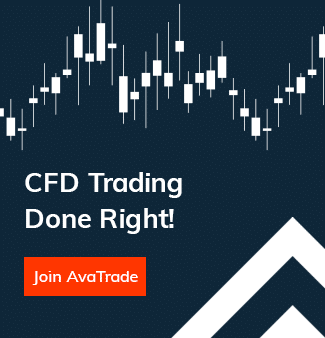RVI Indicator and Strategies

- What is the RVI
- Calculation of RVI
- Reading the RVI Indicator
- Trading RVI Signals
- RVI Strategies with a Complimentary Indicator
The Relative Vigour Index (RVI) is a technical analysis indicator designed to measure the conviction of the recent prevailing price action of an asset, as well as the possibility of its continuation in the short and medium-term.
The RVI indicator was developed by Donald Dorsey in 1993. The author then updated it into the current version in 1995. RVI belongs to the broad Oscillator group of indicators, which essentially means that it helps traders to determine overbought and oversold conditions in the market.
However, while most oscillators focus on the high and low prices (extremes) within a certain period, the RVI pays more attention to the closing price, relative to the opening price.
In addition to overbought and oversold signals, oscillators also tend to communicate whether a trend is gaining momentum or losing it. The inherent danger of using oscillators is that they can deliver false signals in the middle of strong trends, but this can sometimes be mitigated by combining them with other indicators. Some of the most common oscillators, other than RVI, include Stochastics, MACD, RSI (Relative Strength Indicator) and CCI (Commodity Channel Index).
Open your trading account at Friedberg Direct or try our risk-free demo account!
RVI Calculation
The calculation of RVI is done in such a way that it is easy to determine the ‘vigour’ (or rather the energy) of the price at a particular close period.
The RVI’s formula for each period is as follows:
RVI = (Close – Open) / (High – Low)
Where:
- Close is the Closing Price
- Open is the Opening Price
- High is the Highest Price
- Low is the Lowest Price
The RVI has two lines: Green and Red. The Green line is the RVI itself, while the Red line is known as the ‘trigger’ or ‘signal’ line. The default setting of the RVI line is 10 periods, but this can be adjusted. The Red line is a 4-period moving average (volume-weighted) of the Green line, and it provides trading signals when it crosses above or below the RVI style line. Basically, like a moving average of the RVI, the Red line is more smoothed out and slightly lagging.
Reading the RVI Indicator
As an oscillator, RVI swings above and below a centreline. The RVI centreline is the 0 reading, which means that the indicator delivers both positive and negative readings. A positive reading implies that there is bullish momentum in the market, whereas a negative reading implies that there is bearish price momentum. Principally, when the RVI is around the centreline, it implies that price action is mainly neutral, with no discernible directional bias.
Extreme positive readings denote overbought conditions in the market, while extreme negative readings denote oversold conditions. At such readings, traders watch out for a cross of the signal line.
Trading RVI Signals
RVI delivers different types of trading signals as follows:
- Overbought and Oversold Conditions
These are the main types of signals RVI traders seek in the market. Depending on the parameters set, RVI will signal traders when there are potential overbought or oversold conditions in the market. Usually, a reading closer to 0.4 will imply overbought conditions, whereas a reading close to -0.4 will imply oversold conditions. When in overbought conditions, the idea is to look for opportunities to place a sell order. The signal to sell will be when the Green line crosses the Red line downwards. Likewise, the idea is to place buy orders when RVI is in oversold conditions. The signal to buy will be when the Green line crosses the Red line upwards.
- Divergences
Divergences occur in the market when the price of an underlying asset moves contrary to indicator values. Divergences are a signal for price exhaustion in the market and usually serve as a precursor to potential trend reversals. There are straight and hidden divergences in the market. A straight bullish divergence will occur when the asset price is making lower lows, but the RVI makes higher lows. This will be a signal that the price lacks ‘vigour’ and traders will look to place buy orders in anticipation of an upward price reversal. Similarly, a bearish divergence will occur when the price is making higher highs, but the RVI makes lower highs. When a bearish divergence occurs, traders will look for opportunities to place sell orders in anticipation of a downward price reversal.
Hidden divergences are more common in trending markets. They help traders pick out optimal trade entry points when there is a retracement in the market. For instance, in a bull market, traders will look out for a bullish divergence when the price is making a pullback.
RVI Strategies with a Complimentary Indicator
Even Dorsey himself submitted that the RVI is not an independent technical analysis indicator; it is best suited as a complimentary one.
Here are the best indicators that work well with the RVI:
- RVI and Another Oscillator
Typically, oscillators work well in ranging markets. And two are better than one! RVI is naturally a leading indicator, and when ‘partnered’ with other oscillators, such as Stochastics or RSI, they can deliver definitive and high quality overbought and oversold trading signals.
- RVI and Two Moving Averages
Moving averages are known to smooth out price action in trending markets. However, when using two moving averages, a trend reversal can be confirmed when the faster-moving average crosses the slower one upwards or downwards, depending on the preceding trend. This can be a confirmation that a new trend has formed after an earlier signal was delivered by the RVI. For instance, in a bull market, the RVI can signal overbought conditions, but traders can begin to place sell orders in the market after the faster moving average has crossed the slower one, downwards. Overall, RVI is a versatile indicator that can help traders identify high-quality trading opportunities in the market consistently.
Alongside RVI, Friedberg Direct traders have access to over 150 other technical, fundamental and sentimental analysis tools which they can use to perform extensive analyses on their favourite tradable assets. Friedberg Direct also offers all traders a free demo account where they can try out their trading strategies in the market without putting any money on the line. As a regulated and multiple-award-winning broker, Friedberg Direct offers traders the ideal trading environment to take their trading activities to the next level.
Open your trading account at Friedberg Direct or try our risk-free demo account!
** Disclaimer – While due research has been undertaken to compile the above content, it remains an informational and educational piece only. None of the content provided constitutes any form of investment advice.







